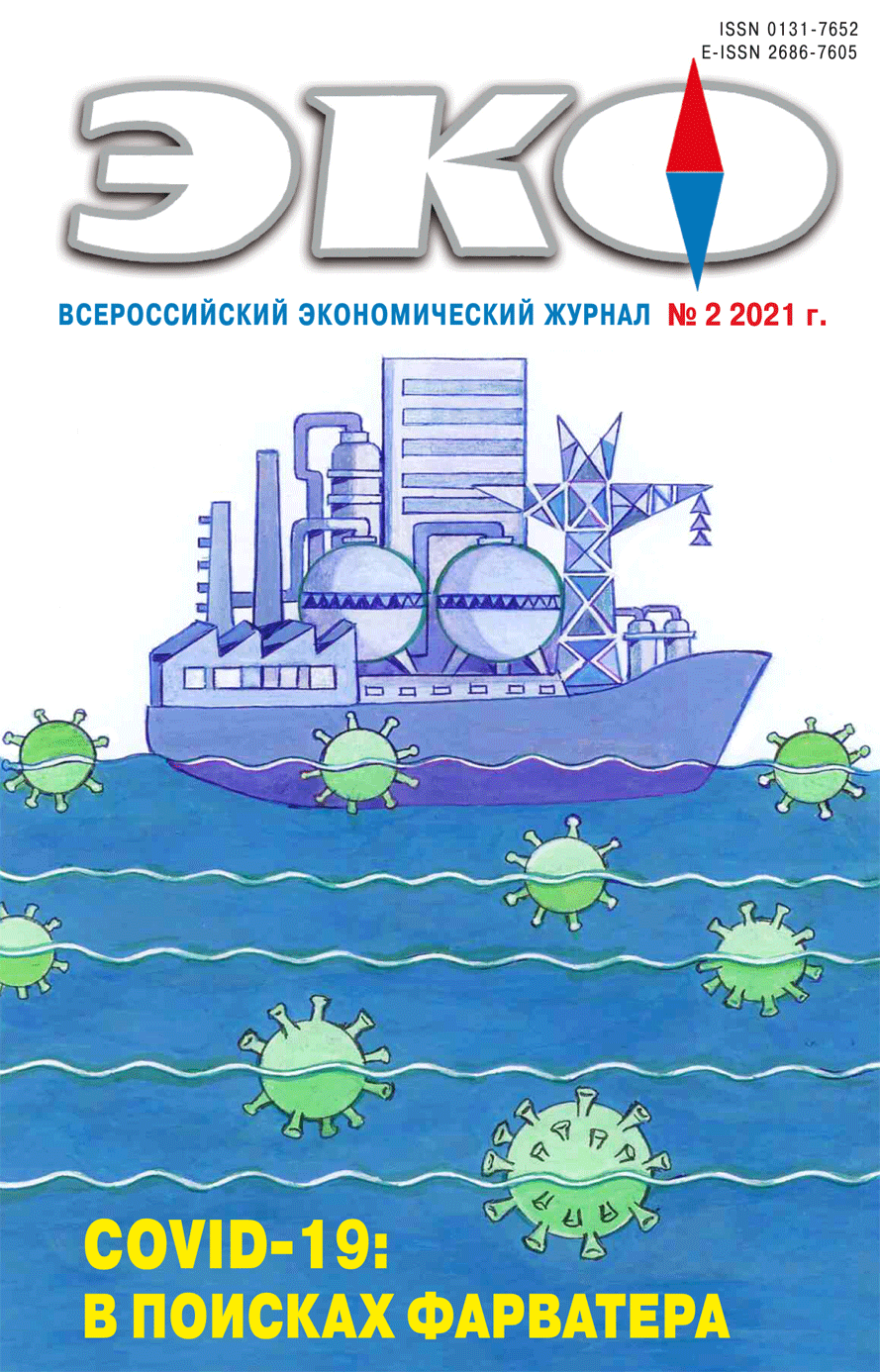DEVELOPMENT OF THE NORTH AND THE ARCTIC
Published 2021-02-01
Keywords
- Arctic corporations,
- OLI paradigm,
- resource chain,
- evolutionary economics,
- economical geography
- platform as a business model,
- Novatek,
- Gazpromneft,
- Norilsk Nickel,
- Arctic,
- theory of multinationals ...More
How to Cite
1.
Pilyasov А, Bogoduhov А. Arctic Corporation: Choosing Approaches to Create New Theory. ECO [Internet]. 2021 Feb. 1 [cited 2025 Dec. 23];51(2):62-84. Available from: https://ecotrends.ru/index.php/eco/article/view/4196
Abstract
In the first part of the article (see ECO № 1/2021), the main provisions of the theory of Arctic resource TNCs were formulated, their radical differences from TNCs operating in the manufacturing industry and services were analyzed. However, there are no less serious differences between Arctic corporations relative to each other, largely determined by the specifics of natural assets and the challenges that this specifics and location pose to companies. In addition, in recent years, there has been a trend towards hybridization of mining and processing companies in the Arctic due to the placement of the processing stage at the place of resource extraction and the transition of companies of different specializations to a platform model of organizing business processes. The differences between the traditional and platform models of corporate development of the Arctic are shown, and it is proved that in the second case the social costs of development are higher. This makes it necessary to enhance the role of the state in establishing general rules of conduct for public and private resource corporations in the Arctic.References
- Богданов А. А. Тектология. Всеобщая организационная наука. М.: Экономика, 1989. Том 1–304 с., том 2–351 с.
- Комар И. В. Рациональное использование природных ресурсов и ресурсные циклы. М.: Наука, 1975.
- Коуз Р. Фирма, рынок и право. М.: Новое издательство, 2007. 224 с.
- Крюков В. А. Институциональная структура нефтегазового сектора: проблемы и направления трансформации. Новосибирск: ИЭОПП СО РАН, 1998. 280 с.
- Нельсон Р., Уинтер С. Эволюционная теория экономических изменений. М.: Дело, 2002. 536 с.
- Пилясов А. Н. Политические и экономические факторы развития российских регионов // Вопросы экономики. 2003. № 5. С. 67–82.
- Пителис Х. Н. Транснациональная компания: трактовка с позиций ресурсной концепции// Российский журнал менеджмента. 2007. Том 5. № 4. С. 21–40.
- Портер М. Конкуренция. М.: Изд. дом «Вильямс». 2005. 608 с.
- Alfaro Laura, Maggie, Chen, Xiaoyang. (2014). The global agglomeration of multinational firms. Journal of International Economics. No. 94. Pp. 263–276.
- Applied Evolutionary Economics and Economic Geography. (2007), Ed. Koen Frenken. London. Edward Elgar. 326 p.
- Beugelsdijk, Sjoerd, McCann, Philip and Mudambi, Ram. (2010). Introduction: Place, space and organization – economic geography and the multinational enterprise. Journal of Economic Geography. No. 10. Pp. 485–493.
- Boschma, R. and K. Frenken. (2017). Evolutionary Economic Geography, in: G. Clarke, M. Feldman, M. Gertler and D. Wojcik (eds.), New Oxford Handbook of Economic Geography, Chapter 11, Oxford. Oxford University Press.
- Chandler, Alfred D., jr., Hagstrom, Peter and Solvell. (2003). Orjan The dynamic firm. The Role of Technology, Strategy, Organization, and Regions. Edited by Oxford university press. 488 p.
- Dunning, John H. (2001). The Eclectic (OLI) Paradigm of International Production: Past, Present and Future. International Journal of the Economics of Business: 8:2. Pp. 173–190.
- Dunning, John H., Lundan, Sarianna M. (2008). Multinational Enterprises and the Global Economy, Second Edition Edward Elgar. 946 p.
- Ethier, Wilfred J. (1986). The Multinational Firm. The Quarterly Journal of Economics, Vol. 101, No. 4 (Nov.). Pp. 805–834.
- Iammarino, S., McCann, Philip. (2013). Multinationals and Economic Geography. Location, technology and innovation. Edward Elgar.
- Jones, Geoffrey. (2005). Multinationals and Global Capitalism. From the Nineteenth to the Twenty-First Century. Oxford University Press. 353 p.
- Navaretti, Giorgio Barba, Venables, Anthony J. (2004). Multinational Firms in the World Economy (Princeton, NJ, Princeton University Press,), xiii+325 Page.
- Organization Theory and the Multinational Corporation. (1993). Edited by Sumantra Ghoshal and D. Eleanor Westney. Sloan School of Management Cambridge, Massachusetts, USA St. Martin’s Press. 368 p.
- Penrose E. (1959). The Theory of the Growth of the Firm. New York, John Wiley and Sons.
- Rugman, Alan M., Verbeke, Alain A. (2004). Perspective on Regional and Global Strategies of Multinational Enterprises. Journal of International Business Studies, Vol. 35, No. 1 (Jan.). Pp. 3–18.
- Srnicek Nick, de Sutter Laurent. (2016). Platform capitalism. Cambridge, UK. Malden, MA: Polity Press.
- The Handbook of Evolutionary Economic Geography. (2010). Eds. By Ron Boschma and Ron Martin. Edward Elgar. 559 p.

